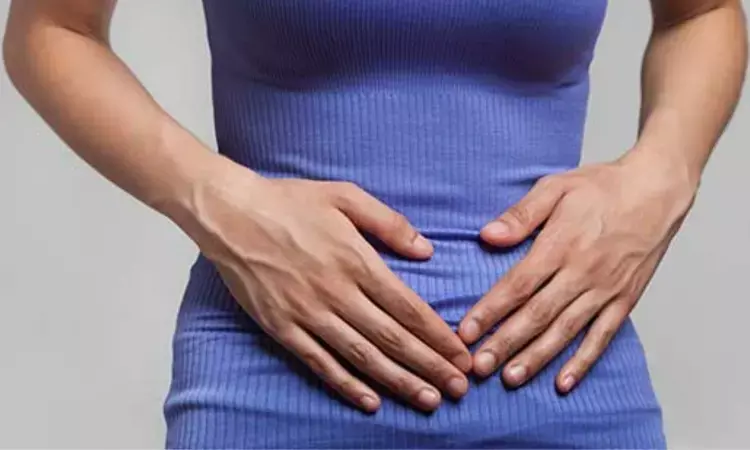- Home
- Medical news & Guidelines
- Anesthesiology
- Cardiology and CTVS
- Critical Care
- Dentistry
- Dermatology
- Diabetes and Endocrinology
- ENT
- Gastroenterology
- Medicine
- Nephrology
- Neurology
- Obstretics-Gynaecology
- Oncology
- Ophthalmology
- Orthopaedics
- Pediatrics-Neonatology
- Psychiatry
- Pulmonology
- Radiology
- Surgery
- Urology
- Laboratory Medicine
- Diet
- Nursing
- Paramedical
- Physiotherapy
- Health news
- Fact Check
- Bone Health Fact Check
- Brain Health Fact Check
- Cancer Related Fact Check
- Child Care Fact Check
- Dental and oral health fact check
- Diabetes and metabolic health fact check
- Diet and Nutrition Fact Check
- Eye and ENT Care Fact Check
- Fitness fact check
- Gut health fact check
- Heart health fact check
- Kidney health fact check
- Medical education fact check
- Men's health fact check
- Respiratory fact check
- Skin and hair care fact check
- Vaccine and Immunization fact check
- Women's health fact check
- AYUSH
- State News
- Andaman and Nicobar Islands
- Andhra Pradesh
- Arunachal Pradesh
- Assam
- Bihar
- Chandigarh
- Chattisgarh
- Dadra and Nagar Haveli
- Daman and Diu
- Delhi
- Goa
- Gujarat
- Haryana
- Himachal Pradesh
- Jammu & Kashmir
- Jharkhand
- Karnataka
- Kerala
- Ladakh
- Lakshadweep
- Madhya Pradesh
- Maharashtra
- Manipur
- Meghalaya
- Mizoram
- Nagaland
- Odisha
- Puducherry
- Punjab
- Rajasthan
- Sikkim
- Tamil Nadu
- Telangana
- Tripura
- Uttar Pradesh
- Uttrakhand
- West Bengal
- Medical Education
- Industry
Does Radiation Timing Impact Outcomes of Artificial Urinary Sphincter for post-prostatectomy incontinence?

A new study published in the recent issue of journal of Urology revealed the effect of radiation timing on outcomes for patients receiving artificial urinary sphincters (AUS) for post-prostatectomy incontinence. Radiation therapy is often necessary for prostate cancer patients and has been linked to complications such as higher rates of device erosion and infection in AUS recipients. However, whether radiation administered before or after AUS placement makes a difference has been unclear until now.
This study conducted a retrospective review of 315 post-prostatectomy patients treated with AUS over a 5-year period, excluding the individuals undergoing salvage prostatectomy. A total of 181 patients who had undergone radiation were divided into 2 groups where one received radiation before AUS placement (123 patients) and the other received it afterward (16 patients).
The study revealed that the timing of radiation relative to AUS placement did not significantly influence key outcomes such as continence improvement or complication rates. Both groups underwent similar improvements in urinary control. The patients in the pre-AUS group reduced their pad use by an average of 3.0 pads per day, while the post-AUS group saw an average reduction of 3.8 pads per day. This difference was not statistically significant (p=0.379).
Over the median follow-up periods of 15.6 months (pre-AUS) and 27.7 months (post-AUS), complications such as device erosion occurred at rates of 12.2% for the pre-AUS group and 6.6% for the post-AUS group. Device infections occurred only in the pre-AUS group (4.8% of cases).
The need for revision surgeries was comparable between the two groups (25.2% for pre-AUS vs. 18.8% for post-AUS, p=0.761). These results suggest that the timing of radiation has no significant impact on overall outcomes. The patients in both groups showed meaningful improvements in continence with similar rates of complications and surgical revisions.
The slightly lower infection and erosion rates in the post-AUS radiation group, though not statistically significant, may warrant further investigation. Also, younger average age in the post-AUS group highlighted a potential variable to consider in future research. Overall, this study provided strong insights for urologists and patients deciding on the sequencing of radiation therapy and AUS placement. The findings indicate that patients can expect consistent benefits and risks regardless of radiation timing by offering flexibility in treatment planning.
Source:
Bochner, E., Johnson, B., Franzen, B., Hertz, A., Matz, E., Hudak, S., & VanDyke, M. (2025). Artificial urinary sphincter placement before or after radiation therapy: Does timing of radiation impact surgical complications and continence? Urology. https://doi.org/10.1016/j.urology.2025.01.003
Neuroscience Masters graduate
Jacinthlyn Sylvia, a Neuroscience Master's graduate from Chennai has worked extensively in deciphering the neurobiology of cognition and motor control in aging. She also has spread-out exposure to Neurosurgery from her Bachelor’s. She is currently involved in active Neuro-Oncology research. She is an upcoming neuroscientist with a fiery passion for writing. Her news cover at Medical Dialogues feature recent discoveries and updates from the healthcare and biomedical research fields. She can be reached at editorial@medicaldialogues.in
Dr Kamal Kant Kohli-MBBS, DTCD- a chest specialist with more than 30 years of practice and a flair for writing clinical articles, Dr Kamal Kant Kohli joined Medical Dialogues as a Chief Editor of Medical News. Besides writing articles, as an editor, he proofreads and verifies all the medical content published on Medical Dialogues including those coming from journals, studies,medical conferences,guidelines etc. Email: drkohli@medicaldialogues.in. Contact no. 011-43720751


